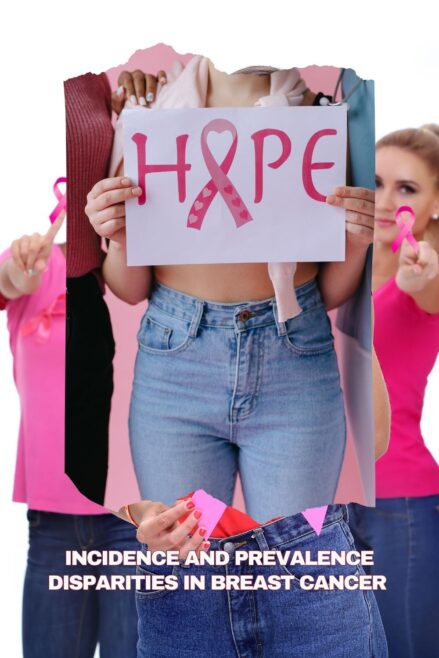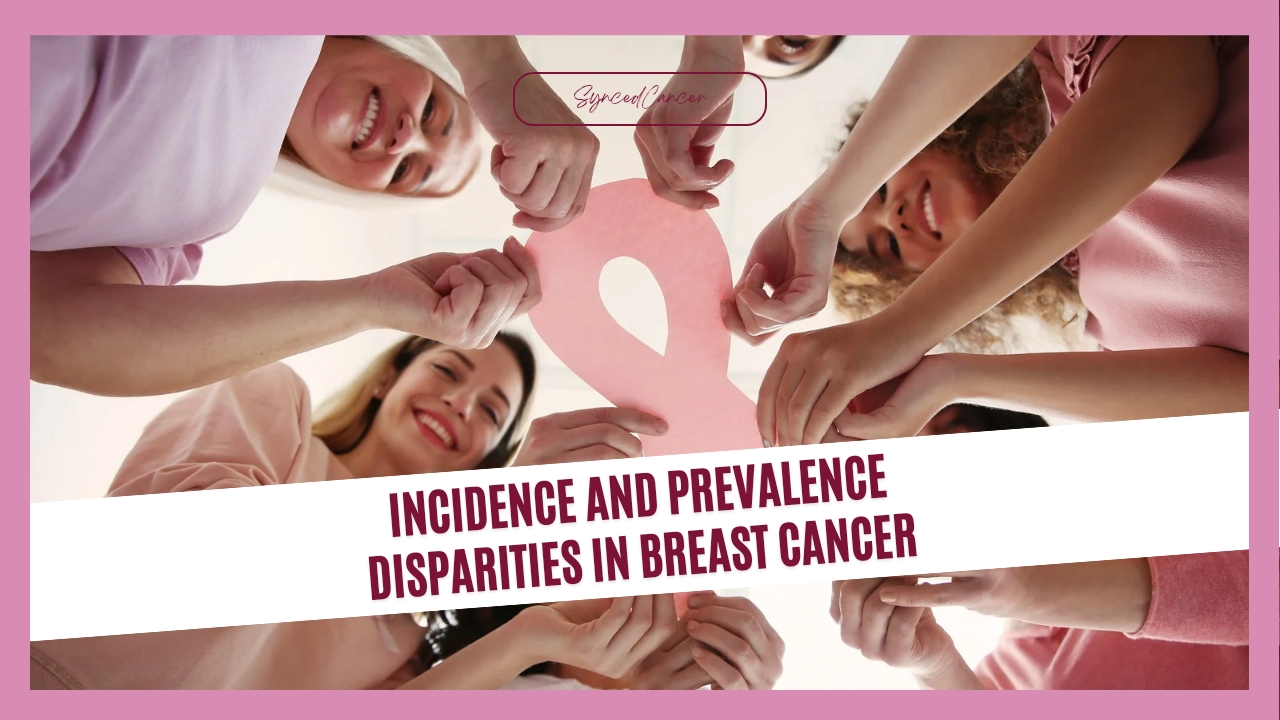Incidence and Prevalence Disparities in Breast Cancer
Breast cancer is the most commonly diagnosed cancer among women worldwide, with significant variations in incidence and prevalence across different populations. These disparities are influenced by a complex interplay of genetic, environmental, socioeconomic, and healthcare factors. Understanding these disparities in breast cancer is crucial for developing targeted interventions to improve outcomes for all women. This blog post explores the incidence and prevalence disparities in breast cancer, examining the factors contributing to these differences and potential strategies for addressing them.
Incidence and Prevalence
Incidence refers to the number of new cases of a disease that occur in a specific population during a defined period. Prevalence refers to the total number of cases, both new and pre-existing, present in a population at a given time. While incidence provides insight into the risk of developing the disease, prevalence indicates how widespread the disease is within the population.

Global Disparities in Breast Cancer Incidence and Prevalence
- Geographical Variations: Breast cancer incidence and prevalence vary significantly across different regions of the world:
- High-Income Countries: Countries such as the United States, Canada, and Western European nations report higher breast cancer incidence rates. This is partly due to increased detection through widespread screening programs and a higher prevalence of risk factors such as delayed childbirth, hormone replacement therapy, and lifestyle factors.
- Low- and Middle-Income Countries (LMICs): These countries generally report lower breast cancer incidence rates. However, the prevalence is often underreported due to limited access to screening and diagnostic services. Additionally, as these countries undergo economic development and adopt more Western lifestyles, breast cancer incidence is rising.
- Ethnic and Racial Variations: Within countries, significant disparities in breast cancer exist among different ethnic and racial groups:
- United States: White women have the highest incidence of breast cancer, but African American women are more likely to be diagnosed at younger ages and with more aggressive forms of the disease, such as triple-negative breast cancer. African American women also have higher mortality rates compared to other racial groups.
- Asia: Asian women, particularly those in East Asia, have traditionally had lower breast cancer incidence rates. However, the incidence is increasing in urban areas due to lifestyle changes, such as higher rates of obesity and reduced breastfeeding.
- Indigenous Populations: Indigenous women in countries like Australia, Canada, and the United States often face higher mortality rates due to breast cancer. This is attributed to later-stage diagnoses and barriers to accessing healthcare.
Factors contributing to the higher prevalence of certain breast cancer subtypes in specific populations, such as triple-negative breast cancer (TNBC) among African American women.
Breast cancer is a heterogeneous disease with various subtypes, each having distinct biological characteristics and clinical outcomes. Among these subtypes, triple-negative breast cancer (TNBC) is particularly aggressive and challenging to treat. TNBC lacks estrogen receptors (ER), progesterone receptors (PR), and human epidermal growth factor receptor 2 (HER2), which limits the effectiveness of hormonal and targeted therapies. Epidemiological studies have shown that TNBC is more prevalent among African American women compared to other racial and ethnic groups. Below are the factors contributing to the higher prevalence of TNBC among African American women, focusing on genetic, biological, socioeconomic, and environmental influences.
- Genetic and Biological Factors
Genetic Predispositions: Genetic predispositions play a significant role in the higher prevalence of TNBC among African American women. Several key genetic factors include:
- BRCA1 Mutations: BRCA1 gene mutations are strongly associated with TNBC. Studies indicate that African American women have a higher prevalence of BRCA1 mutations compared to other racial groups. Women with BRCA1 mutations are more likely to develop TNBC, contributing to its higher incidence among African American women.
- Genetic Variants: Beyond BRCA1, other genetic variants and polymorphisms common among African American women may predispose them to TNBC. Genome-wide association studies (GWAS) have identified specific genetic markers associated with increased TNBC risk.
Tumor Biology: The biological characteristics of tumors in African American women often differ from those in women of racial and ethics backgrounds:
- Aggressiveness: TNBC tumors tend to be more aggressive, with higher proliferative rates and increased likelihood of metastasis. African American women are more likely to present with these aggressive tumor features.
- Hormone Receptor Status: African American women are less likely to have hormone receptor-positive (HR+) tumors and more likely to have hormone receptor-negative (HR-) tumors, which includes TNBC. This hormonal profile contributes to the higher incidence of TNBC.
- Socioeconomic and Healthcare Factors
Access to Healthcare and Screening: Socioeconomic disparities in breast cancer significantly impact the outcomes and the prevalence of certain subtypes:
- Screening Access: African American women often have less access to regular mammography screenings due to financial barriers, lack of health insurance, and limited availability of screening facilities. This can lead to later-stage diagnoses when tumors are more likely to be aggressive, including TNBC.
- Healthcare Utilization: African American women may face obstacles in accessing high-quality healthcare, including diagnostic and treatment services. Socioeconomic factors such as income, education level, and employment status can influence healthcare utilization.
Quality of Care: The quality of care received by African American women can also contribute to disparities in breast cancer subtypes:
- Delayed Diagnosis: Delays in diagnosis and treatment initiation can result in the progression of more aggressive cancer types. Studies have shown that African American women often experience longer intervals between symptom onset and diagnosis.
- Treatment Disparities: African American women are less likely to receive standard-of-care treatments, including surgery, radiation, and chemotherapy. These treatment disparities in breast cancer can lead to poorer outcomes and higher prevalence of aggressive cancer subtypes like TNBC.
- Environmental and Lifestyle Factors
Diet and Physical Activity: Environmental and lifestyle factors influence breast cancer risk and subtype prevalence:
- Obesity: Higher rates of obesity among African American women are linked to an increased risk of developing TNBC. Obesity is associated with chronic inflammation and insulin resistance, which can promote tumor development and progression.
- Dietary Patterns: Diets high in processed foods, sugars, and unhealthy fats, and low in fruits, vegetables, and fiber, can contribute to an increased risk of aggressive breast cancer subtypes. African American women may have dietary patterns that elevate their TNBC risk.
Reproductive Factors: Reproductive factors also play a role in the prevalence of TNBC:
- Parity and Breastfeeding: African American women tend to have higher parity (number of pregnancies) and are less likely to breastfeed for extended periods. High parity without prolonged breastfeeding has been associated with an increased risk of TNBC.
- Age at First Birth: Earlier age at first childbirth, more common among African American women, is associated with higher risk for TNBC.
- Psychosocial and Cultural Factors
Health Beliefs and Behaviors: Cultural and psychosocial factors influence health behaviors and breast cancer outcomes:
- Health Beliefs: Cultural beliefs about illness and healthcare can affect how African American women perceive and respond to breast cancer symptoms. Mistrust of the healthcare system and fatalistic attitudes toward cancer may delay seeking medical care.
- Social Support: The level of social support, including family and community support, can impact healthcare-seeking behaviors and adherence to treatment protocols.
Stress and Mental Health: Psychosocial stress and mental health can also contribute to disparities in breast cancer:
- Chronic Stress: Chronic stress, more prevalent in African American communities due to socioeconomic challenges and systemic racism, can affect immune function and cancer progression. Stress-related biological changes may promote the development of aggressive breast cancer subtypes.
- Mental Health: Mental health conditions such as depression and anxiety, which are often underdiagnosed and undertreated in African American women, can impact cancer outcomes by influencing health behaviors and treatment adherence.
Conclusion
Breast cancer incidence and prevalence disparities are influenced by a complex interplay of different factors among different racial and ethnic groups. Addressing these disparities in breast cancer requires a multifaceted approach, including improving access to screening and treatment, enhancing education and awareness, and addressing socioeconomic and cultural barriers. Genetic predispositions, tumor biology, and reproductive patterns contribute to the increased risk of triple-negative breast cancer (TNBC) among African American women. By understanding and addressing the root causes of these disparities in breast cancer, healthcare providers and policymakers can work towards ensuring equitable care and improving breast cancer outcomes for all women.
REFERENCES
Breast Cancer Research Foundation – https://www.bcrf.org/blog/understanding-breast-cancer-racial-disparities/
Assessed 4th August, 2024



What do you think?
It is nice to know your opinion. Leave a comment.